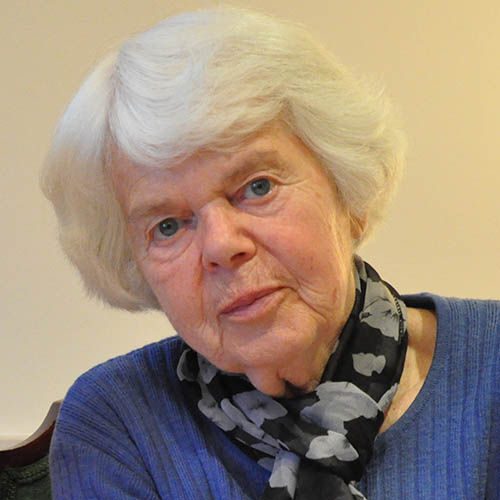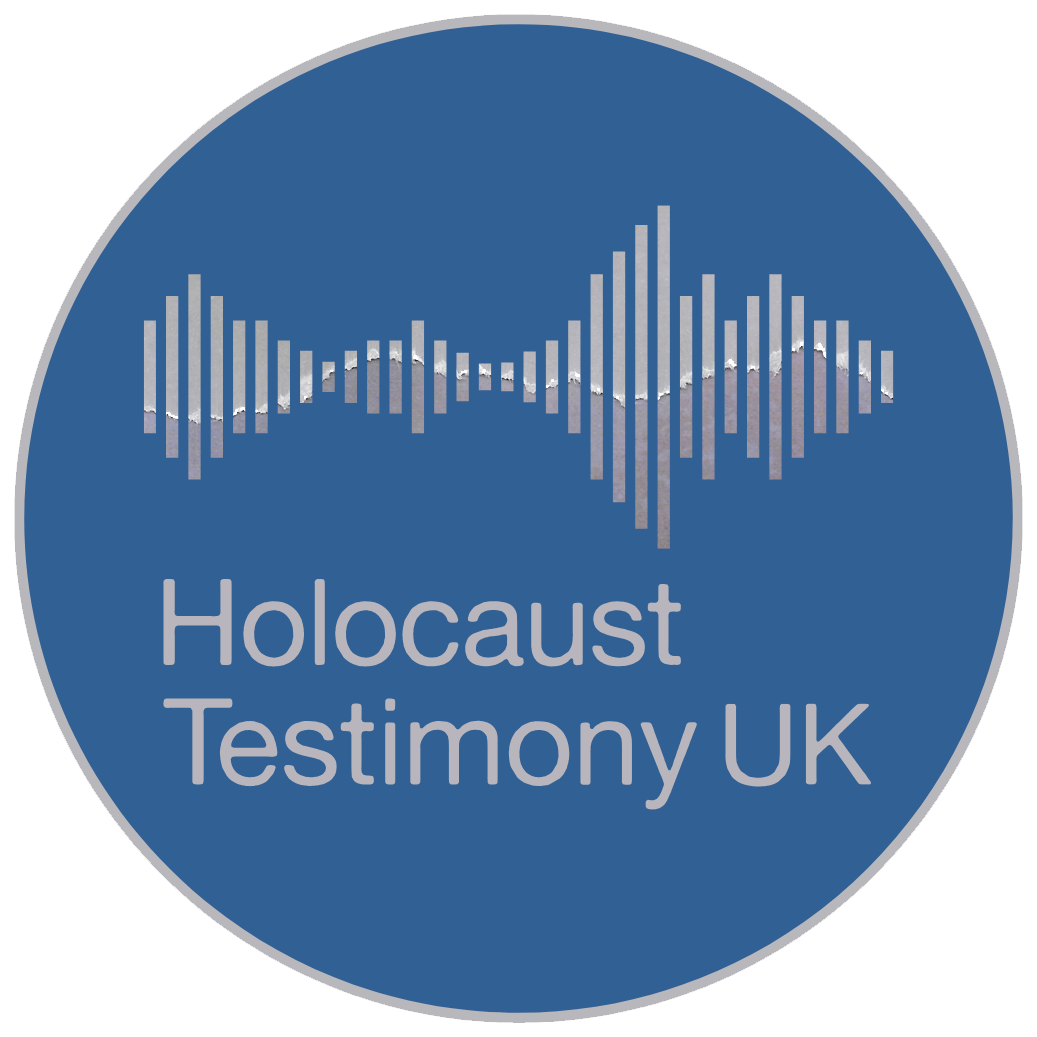<message>

Name
Born:
N/A
Place of Birth:
N/A
Date of Interview:
08/10/15
Place of Interview:
Interviewed by:
Name (Clickable)


It looks like this interview is hosted by one of our partners
Please click the link below to be redirected...
Visit Partner Website



INTERVIEW:
<name>
Born:
00/00/0000
Place of Birth:
Piestany
<name>
Born:
00/00/0000
Place of Birth:
Institution:
<partnerName>
Collection:
Date of Interview:
08/10/15
Interviewed By:
Dr Jana Buresova

Interview Summary
Gertrud Friedmann, born April 1929, was ten years old when the Slovak Fascists came to power, and was soon aware of their influence. At her Piestany Jewish school, she was one of only four pupils in her class to be selected for the gymnasium. All were ‘non-Sephardic looking’; all were promptly returned to their Jewish school. Life had been comfortable in the spa town, where her father, Alexander (born in Diviaky village, 8.18.1894) was an hotel manager, and her mother, Margaret (née Winter, born in Kezmarok, 9.9.1896), worked in fashion as a master tailor. Both parents were described as ‘modern’, but religiously fairly observant ‒ unlike their children.
In March 1942, the elder daughter, Edith, sixteen in July, was seriously at risk; the deportation of Jewish girls/women aged 16‒40 had begun, always on a Saturday, direct from meeting points at schools to Auschwitz or via Bratislava. Some boys were also included in the first transport to build barracks, while anxious parents were readily allowed to join or follow their children. On this occasion, Edith’s name was removed from the list prepared by a Mr. Urban, prominent in the Jewish community.
Such developments ‘brought people together.’ The particularly harsh 1941 Slovak Jewish Codex (based on the Nuremberg Laws), coupled with the town’s wartime economic decline, had impacted on Alexander Friedmann, but at that juncture Jews active in the Slovak economy were exempted from deportation, so a friend gave him a largely ‘fictional’ job as a sales representative of leather products, travelling to small towns where he made useful contacts. Subsequent legislation, however, limited protected professions to doctors, pharmacists and some ‘special people’, and Jewish workers replaced Slovak ones in Germany. Moreover, Slovakia brokered an agreement to pay Germany 500 Reichsmark for every Jewish person deported from Slovakia ‒ like ‘modern slaves’ the interviewee commented. In May 1942, Slovakia legislated to deport 20,000 more Jews.
Despite paying a government official Kr 20,000 (Slovak crowns), the Friedmann’s were listed; warned by a neighbour, they fled. Their hazardous journeys took them to Trencin, Zilina, Martin, Hiadel, Banska Bystrica, Zvolen, Sklene Teplice, and finally back to Piestany and Bratislava. In Zilina, via a Rabbi they obtained false papers as the Catholic Fabian family. Blonde, blue eyed , they stayed with Gertrud’s uncle Armin Winter and his wife Valery until 1944. Gertrud posed as their daughter, known at school as Winterova (Slovak feminine ending of a name). The atmosphere was very tense. With an internal concentration camp on the outskirts of Zilina and ‘non-stop transports to Auschwitz’, very few Jews were left when news reached them of the last transport of 1,000 Jews, including community organizers. Armin, through his business and Slovak partner, bribed people with bottles of Slivovice, while local anti-Nazi Slovaks helped to protect the family during house to house searches.
Having fought in the army in World War I, Alexander Friedmann was trained in survival techniques, and guided his family through many dangers, sometimes sleeping rough. Constant intense self-control was essential, Gertrud recalled. Village dialects and clothing differed from those in towns, marking them out, and German was both an advantage and hindrance. Whilst her father could hide behind a Fascist newspaper in a café listening to SS personnel, her German-speaking mother was cautious about speaking in Slovak. Sister Edith had to quickly pretend that she was a simple girl with only a few words of German when one soldier asked another for the time, and she automatically checked her watch. Sharing Christmas Eve and singing unfamiliar carols with well-meaning Christian Slovaks proved risky too; Margaret knew only the first verse of Silent Night – in German.
The family paid its way with money quickly withdrawn from the bank; Margaret and Gertrud sewed, Edith nursed, and everyone when/where possible worked in the fields. When the Slovak National Uprising began in the Banska Bystrica region (August‒ October 1944), the Friedmann’s joined the partisans and Soviet units that had broken through the Dukla Pass. Ditches were dug to prevent German tanks approaching, Margaret sewed green uniforms, Edith nursed at the HQ and Gertrud acted as a messenger, learning some Russian. Local Nazis fled, but severe SS reprisals followed. Some of Gertrud Friedmann’s worst experiences include distracting an SS officer who suspected that her sister was a partisan, and later, in Zvolen, being caught listening to BBC Radio London with its distinct Beethoven musical introduction.
Although the war did not end completely until May 1945, the region was liberated in March 1945 by the Red Army, which reached Bratislava in April. Details of the atrocities in Auschwitz had been made known by Rudi Vrba and Alfred Wetzler after they had escaped in spring 1944 (and hid in Zilina, where Gertrud took them food). Later, the Friedmann’s received news of family members who had perished there, including Gertrud’s professor of economics uncle from Trnava. Her Zilina uncle and his wife were shot on 4 April 1945. Back in Piestany, the Friedmann’s flat was occupied, so they were allocated the flat of dead Jews, and searched for work and furniture.
In 1945 Slovakia again became part of Czechoslovakia, but new dangers arose. Gertrud Friedmann studied at Charles University in Prague from 1949‒1953, becoming dentist, later orthodontist working with children. When she applied for a place for university, however, the February 1948 Communist coup had already transformed Czechoslovakia. As her (former hotel manager) father was initially perceived as a capitalist, the authorities had to be convinced that he was ‘a worker’; neither he nor his wife (despite her maiden name), was related to the Winter brothers who had had major business interests in Piestany. In conclusion, Gertrud’s message stressed the need for people to love and respect each other.
Additional comments:
The notorious 1952 Slansky trials in Prague condemned several prominent Jewish men to death, worrying what remained of the Jewish community.
Key Words:
Fabian, Friedmann, Lewkowicz, Vrba, Wetzler, Winter. Auschwitz, Banska Bystrica, Bratislava, Czechoslovakia, Diviaky, Germany, Hiadel, Kezmarok, Martin, Nove Mesto, Piestany, Sklene Teplice, Slovakia, Trencin, Trnava, Zilina, Zvolen. Communist, control, deported, deportation, Fascist, German, Germans, Jews, Jewish, partisans, Red Army, Russians, uprising, Slovak, SS, transports, Wehrmacht.


